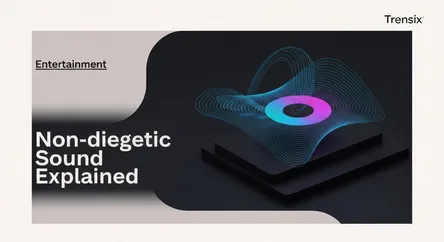Entertainment
Non-diegetic Sound Explained

Discover non-diegetic sound, the auditory layer in movies like scores and narration that characters can't hear, used to shape emotion and story.
What is it?
Non-diegetic sound is a filmmaking term for any sound that does not originate from within the world of the film. It's an auditory element added for the audience's benefit, which the characters on-screen cannot hear. The most common examples include the musical score, a narrator's voice-over, or sound effects added for dramatic emphasis. This is the opposite of diegetic sound, which includes dialogue, footsteps, and music that exists within the story's reality, like a song playing on a character's radio.
Why is it trending?
As a fundamental element of cinema, non-diegetic sound is always a topic of discussion among film enthusiasts. It trends whenever a popular movie or series uses it in a particularly impactful way. For instance, an iconic, mood-setting score like in "Jaws" or an unconventional narrator can spark widespread analysis on social media and video platforms. Film critics and YouTubers often break down how these sounds manipulate audience perception, bringing this technical term into the mainstream conversation and encouraging viewers to notice its powerful, often subliminal, effect.
How does it affect people?
Non-diegetic sound is a powerful tool for emotional manipulation and storytelling. It acts as a direct line to the audience's feelings, bypassing the characters' own awareness. A soaring orchestral score can make a scene feel epic and triumphant, while a tense, dissonant track can build unbearable suspense. A narrator can provide critical exposition, offer ironic commentary, or create an intimate connection with the viewer. By guiding emotional responses and providing context, it profoundly shapes how an audience interprets the narrative, making scenes more impactful and the overall viewing experience more immersive and memorable.